This article is written by Himanshu Dhaked and further updated by Sneha Arora. This article delves into the history, origin and sources of Muslim law, providing a detailed exploration of its principles. The first part of the article covers the evolution and historical development of Muslim law. Further, it provides a detailed description of the periodical evolution of Islamic religious law. Several terminologies related to Muslim law are discussed in detail, along with the sources of the customs, rituals and traditions that have developed in Muslim law. This article deals with the culture and traditions of Muslims, which were both manmade and evolved gradually over time, rooted in the foundational text of Islam and continually influenced by pre-Islamic traditions and diverse cultures with which Islam interacted.
Table of Contents
Introduction
Muslim law is part of the family law. Over the past decades, there have been several debates concerning the Islamic institution of Shari’ah, which literally means ‘path’ or ‘way,’ which is the formal name for the Islamic legal system. At the heart of this profound religion lies the Quran, the divine word of God that serves as a guiding force for all those who adhere to its teachings. It has guided the lives of Muslims for centuries and continues to influence various customs and practices. Every religion that has ever prospered on earth has promulgated to its followers a sacrosanct course of action to live their lives. ISLAM’ is the work of God, where ‘QURAN’ is at the centre of the lives of all the people who follow the acts as a centripetal force towards the holy centre. The founders of Islam believed in one God, who, via revelation, guided and regulated the human conduct of its followers. Islam is a monotheistic religion; its followers believe in the existence of only one God, (ALLAH), who is the creator of the world. Allah is omnipresent, omniscient and intervenes in the world. The meaning of the word ‘Islam” is ‘submission to the will of the god’. The followers of Islam are called Muslims. Islam has stood the test of time and has been compared with the beliefs of other religions. Islam is the direction that God gives to man through the holy book of the Quran and its messenger, Prophet Muhammad. This article delves into the evolution, history and aspects related to the historical developments in Muslim law and the events that happened.
Historical development of Muslim law
Islamic law, which was traditionally regarded as divinely inspired (meaning coming from a god or deity), has been relieved from this perception. The divine communicated it to the Prophet Muhammad, who prescribed it in the Quran. Islam is an Arabic word which means “submission to the will of God”. This submission is not a passive act but an active choice to follow the path laid out by Allah. It is developed from the word “Salam”, which literally translates to “”peace. The Prophet Muhammad is a pioneering figure in Islam. He is believed to be the last in the long line of messengers, such as Abraham, Moses, Noah and Jesus. Much of the emphasis is based on the fact that, we can say, the founding stones of the pyramid of Islam were laid by Prophet Muhammad. The life of Prophet Muhammad is imperative to the understanding of Islam. Prophet Muhammad was born in the city of Mecca, which was the home of a powerful tribe of Quraish, around 570 AD. The Prophet was regarded as Al-Ameen, the trustworthy, because of his loyalty as a merchant in the early days of his life. He was a spiritually intrigued person and frequently meditated in a cave at Mount Hira, near Mecca. On one such particular juncture, he was instructed to cantillate “in the name of [your] lord.” by the Archangel Jibril.
The revelations were the first of a plethora that formed the very edifice of the Quran. These vouchsafes contradicted pre-Islamic polytheistic beliefs and propelled the existence of a monotheistic belief. The metamorphosis started with her wife Khadijah, as she was the first transmute to Islam. Her advice was of great importance to the prophet, as she always prompted the prophet that Allah would not let him glum. After her demise in 619 AD, the prophet married again eight times, all of whom were instrumental in spreading the teachings of Allah. Muhammad received numerous revelations from Gabriel for the next 23 years, which were recorded by his scribes. The resulting 114 surahs (or chapters) were collated into the Quran.

Throughout its rich history, Islam has faced several challenges and has evolved gradually and substantially to meet the changing world around it. From its early days in the Arabian Peninsula to its global spread across the centuries, Islam has remained a beacon of hope and guidance for millions of people. The development of Muslim law can be classified into five periods.
First period (570-632 AD)
This period begins with the birth of the Prophet Muhammad in 570 AD and ends with his death on June 8, 632 AD. The Prophet in his adulthood often used to meditate during this time, the Quran was composed, and most of the Ahadis came into existence. At the age of 40 in 610 AD, he got his first revelations and was termed AH-1. At the beginning, only his wife used to believe in his preachings, along with a few others. After the Prophet Muhammad’s migration to Medina in 622 AD, which marked the beginning of the Hijra era, he lived there for approximately 10 years until his death in 632 AD. Following his death in 632 AD, the concept of the caliphate was introduced to lead the Muslim community
- First Caliph: Abu Bakr (632-634 AD)
- Second Caliph : Omar (634-644 AD)
- Third Caliph: Uthman (644-656 AD)
- Fourth Caliph: Ali (656-661 AD)
Prophet Muhammad and his band of followers faced persecution and fled to Medina, an event that holds significant importance in Islamic history as it signifies the start of the Islamic calendar.
The last 10 years of the Prophet Muhammad are considered to be the most fruitful and glorious periods in the history of the development of Muslim law. During this time period, all the verses of the Quran were composed along with the successive increase in the existence of the Ahadis. The Quran during this regime was the primary source of Muslim law, and it is believed to be the literal words of God as revealed to the Prophet Muhammad. While the Ahadis consist of the sayings and deeds of the prophet, i.e., indirect revelations (guidance or divine instructions received by the Prophet Muhammad through means other than direct communication from Allah), the Quran contains the direct words of God and the laws and practices that guide the behaviour of Muslims, including rules for worship, morality, and social interactions.
Second period (661-750 AD)
After the death of the Prophet Muhammad, the institution of the caliphate was established, and the collection and edition of the Quran were undertaken. This period saw the development of the first schools of law, including the Sunnis and the Shias. The Sunnis believed that the caliphate should be based on the principle of election, while the Shias believed that the caliphate should be practiced on the principle of hereditary succession.
This period also saw the emergence of different interpretations of the Quran and the Ahadis, which would eventually lead to the development of different schools of law. It was during this period that the collection and edition of texts were undertaken and completed. The final compilation of the Quran took place during the reign of Caliph Uthman and his edition of the Quran is considered to contain the most relevant texts, being free from interpolations. Therefore, this period saw gradual and significant changes and developments, including the establishment of schools of law and the Quran as significant guidance for the Muslim community.
Third period (300 AH)
This period marks its significance from the death of Ali to 300 AD and highlights the division of the Muslim world between the Shias and the Sunnis. The Sunni and Shia schools were established, and a systematic drive was made to collect the traditions. After the death of Ali, his first son, Hasan, joined the Umayyad dynasty ruled by Mauvia. Further, his second son, Hussain, revolted and died fighting at Karbala. Furthermore, the division between the Shias and Sunnis unfolded with a drastic impact, setting a final and permanent division. The division between Shias and Sunni Muslims is one of the most significant schisms in Islamic history, originating shortly after the death of the Prophet Muhammad in 632 CE. This split was primarily rooted in a disagreement over the rightful successor to the Prophet Muhammad. Sunnis believe the community should choose the leader by consensus and follow Abu Bakr, a close companion and follower of the Prophet Muhammad. In contrast, Shias believe that the Prophet Muhammad appointed his cousin and son-in-law, Ali-ibn-Abi Talib, as his successor. This prominent and fundamental disagreement over leadership set the stage for the split.

Fourth period (13th-19th Century)
This period begins at about 962 AD, during the reign of Abbasid. Abbasids earlier used to denote themselves by the word “Imam,” i.e., the supreme leader. As per the Sunnis, the Imam is considered their supreme leader, but the law is superior to all aspects, including the Imam. Whereas, in Shia, it is believed that the Imam is the supreme body and the lawgiver. Through the efforts of various jurists from each school, various laws were generated in relation to Muslim law. Further, Muslim law was elaborated in detail by the scholars of different jurists. From 300 AH to the abolition of the caliphate, there was the development and establishment of the doctrines of ijtihad (independent reasoning) and taqlid (following established principles).
Efforts of jurists to develop law.
The development of Islamic law has been filled with several complexities. In order to develop Muslim laws, the jurists of various schools have made significant efforts to enhance the efficiency of the Muslim law and its development. The early development of Muslim jurisprudence (usul-al-fiqh) mainly focused on the establishment of foundational principles and methodologies in order to derive legal principles from the primary sources, the Quran and the Sunnah (the teachings and principles of Prophet Muhammad).
The time period is between 816-1058 BCE, during the era of the expert jurists. The four major schools of Islamic jurisprudence (Hanafi, Maliki, Hanbali and Shafi’i) were established, each with their own distinctive principles and methodologies for textual interpretations and extractions of legal rulings. The Shia sect schools of Islamic jurisprudence began to develop later than the Sunni School. The major Shia school, the Ja’fari school (associated with the Twelver Shia branch), emerged around the 10th century CE. Therefore, while the Sunni schools were established between the 8th and 10th centuries CE, the Shia Ja’fari school developed subsequently, around the same period. During this era, there was extreme growth, refinement and codification of Islamic legal tradition, along with the compilation and preservation of the sunnah in the formal academic disciplines.
Further, for better establishment and development, key juristic rules and principles were established and developed, such as Qiyas (analogical reasonings), Ijma (consensus), and Ijtihad (independent reasoning by qualified jurists). Several other methods were also adopted by the other jurists, like istihsan (juristic preference) and Maslahah (consideration of public interest), to adapt to and help the jurists deviate from strict analogy if it led to a more equitable solution.
Ijtihad and taqlid
“Ijtihad” in Arabic means “effort.” It’s a process by which the jurists of the different schools use independent knowledge and experience to make judicial decisions combined with an understanding of the Quran. The literal meaning of the term has been derived from the term ‘jihad”, which means “to struggle”. The revelation was completed at the time of the death of the Prophet Muhammad, according to the sources referred to as the Quran and Sunnah. The Ijtihad has, however, been a source, methodology or process for tackling all new issues and problems under Islamic law. All the other sources which fall after the Quran and the Sunnah fall in the realm of Ijtihad like the Ijma, Qiyas Istihsan, etc. Thereby, Ijtihad, in its basic sense, means the use of human reason in the expansion and development of the Shari’ah.
The primary objective of the ijtihad is to discover the truth and the intention of the lawgiver, the Almighty and to find a new solution to the new legal issues. Therefore, the term ijtihad represents itself as a source from which the subject matter is not available in the other sources of Islam. For example, the matters of jobs in banks, test tube babies, organ donations, etc. are dealt with under ijtihad. Therefore, ijtihad is an application or process of independent reasoning and interpretation carried out by a qualified Islamic jurist. Throughout the first five Islamic centuries, ijtihad was practiced theoretically and practically among Sunni Muslims.
In the modern era, Islamic reformers have called for abandoning blind conformity and emphasising Ijtihad as a return to Islamic origins. Ijtihad is considered a religious duty for Islamic scholars. Those who know Sharia in detail but cannot extract rules directly from the sources are called Faqih.
“Taqlid” in Islamic law means the unquestioning acceptance of the legal decisions taken by someone else, even without knowledge of the foundation of the decision. In other words, it means to follow someone else, to imitate. In Islamic philosophy, Taqlid means to follow a Mujtahid in Muslim law. A Mujtahid is a person who is a scholar of Muslim law or Islamic jurisprudence. Generally, in Islamic law, a person who performs Taqlid is known as mujtahid.

The concept of Taqlid usually closes the door of the Ijtihad, in such a situation, every Muslim has to follow the principles of Mujtahid or the doctrines of one of the four original schools of thought. The term Taqlid is used in both Sunni Islam and Shia Islam. In Sunni Islam, the taqlid refers to a layperson following a qualified person or a scholar and their interpretations. This concept in Islamic law became more complex and impractical for ordinary Muslims to derive legal rulings directly from the primary sources, the Quran and the Hadith. Taqlid in Sunni Islam implies a certain degree of trust and belief in the expertise of scholars from the most famous schools of thought, such as Hanafi, Maliki, Shafi or Hanbali. Some of the critics argue that taqlid can lead to intellectual stagnation by discouraging independent reasoning; it is generally seen as a practical method to ensure their actions align with Islamic law.
In Shia Islam, the taqlid is the general conformity of the Non-Mujtahids to the Mujtahids without a negative connotation. Shia Muslims follow the teachings of the Mujtahids, who are considered scholars and are capable of independent reasoning and interpretation of Muslim laws. Taqlid in Shia Islam is considered a necessary and positive aspect of religious practice, ensuring that followers adhere to an accurate and contemporary interpretation of Muslim law. Shia Muslims often choose a living Marja to follow and adhere to legal opinions in matters of daily life and religious practice. This discrepancy stems from differing views on the imamates or the Sunni Imams. A philosopher named “Al-Jurjani” defines taqlid as a person following others words and actions. Taqlid is the uncritical acceptance of the words or actions of others as truth without verifying the underlying evidence or authority.
Fiqh
Fiqh is generally considered Islamic jurisprudence and is described as a basic understanding of the human needs, practices and requirements of the Sharia. In other words, Fiqh means knowledge about Islamic rulings in accordance with their source. In accordance with the divine understanding as mentioned in the Quran and Sunnah, Fiqh expands and develops the sharia through the interpretations of the Quran and the sharia that is Ijtihad. Generally, Fiqh is considered changeable and can be changed as per the jurists, it generally deals with the rituals, morals and traditions of Islam as well as the economic and political system. The Fiqh studies are generally divided into Usul-al-fiqh (principles of Islamic jurisprudence). In the modern era, Fiqh is generally associated with the four prominent schools (Madhhab) of Fiqh within Sunni practice and two schools within Shi’a practice.
Fifth period (19th century AD to Present)
According to Fyzee, after the abolition of the caliphate, the development of Muslim law slowed down, and the law was mainly applied through legislation. During this period, the consistency and spontaneous response to the Muslim laws were weak and irregular. The major efforts for the development of the law were mainly driven by the Ijma and Qiyas. The jurists of the schools were not allowed to formulate laws and rules. During this period, there was already the abolition of the Caliphate and Sultanate, so the only law making body was the legislation, like in other countries, including India. Thereby, this period was mainly influenced by western colonial law and powers and the adaptation of western-style laws within Sharia. Leading to the adaptation and integration of a western-style legal system within the framework of Sharia. This integration often meant that Sharia had to adapt to and coexist with the newly introduced western-style laws, creating a hybrid legal system that reflected both traditional Islamic jurisprudence and modern legislative practices.
This period began with the establishment of British rule, soon after the decline of Muslim rule, leading to the complete establishment of the British colonial era. Certain subjects are covered in the common law systems and some laws were left as customary laws in family law. Further, the Shariat Act 1937, in Muslim law, was passed to hold strong control over the persons who confessed themselves as Muslims. The major reform during this period was the Muslim Dissolution of Marriage Act of 1939, which granted Muslim wives the right to sue for divorce on specific grounds.
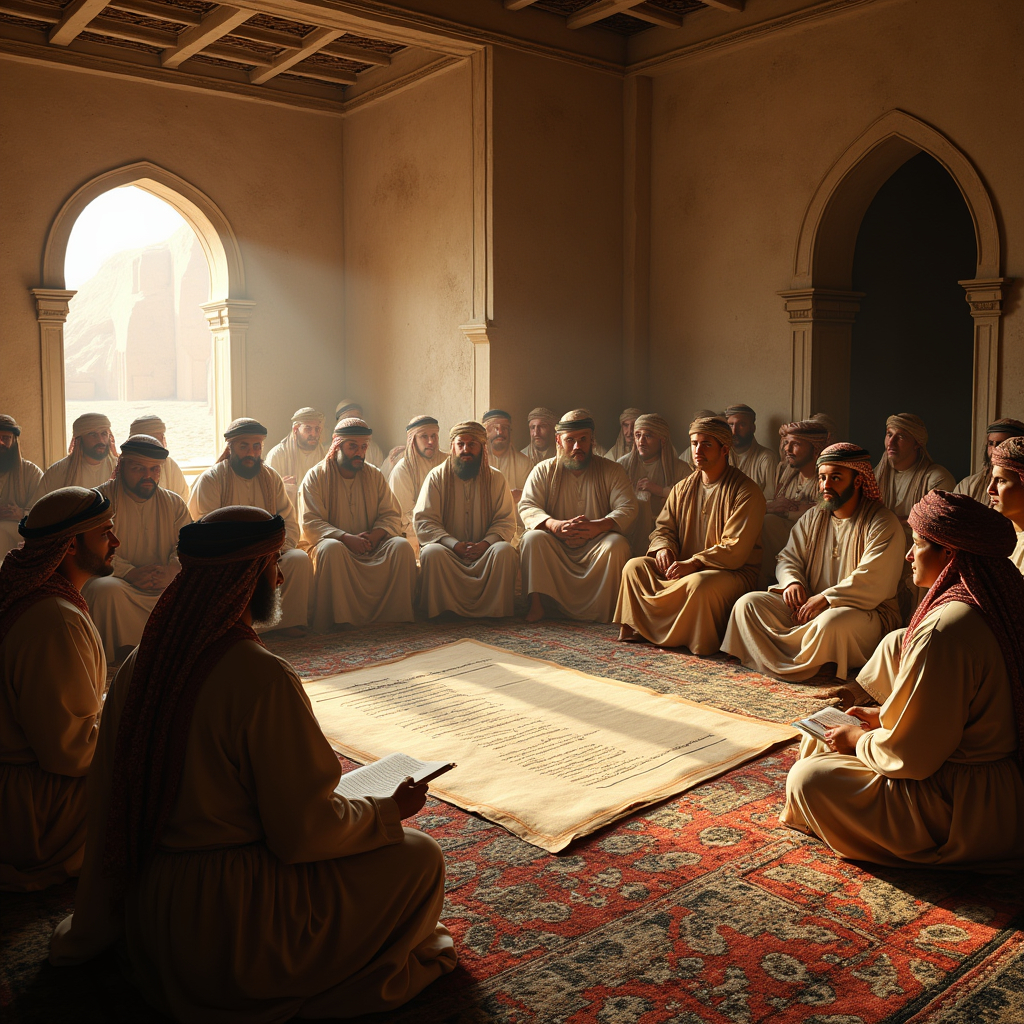
Principal sources of Islam
Quran and Hadith
The muslim law has originated from the Al-Quran which is believed by the muslims to have existed from eternity. The Quran is the genesis of Islam and also the primary source. Its significance is spiritual and sacred, according to Muslim principles. Every word of the Quran is that of God, communicated to the Prophet Muhammad through Gabriel. Each word was provided in fragmented form, extending over a period of 23 years. The Quran exercises its influence in shaping Islamic principles, though not pragmatically but theologically, ‘a code of rules’ for Muslims. The Quran is considered as Al-furqan means showing or distinguishing truth from falsehood or right from wrong. In the tradition of the Muslim faith, the Holy Quran is the last book of God revealed to the Prophet Muhammad, who was the last Prophet of God on earth, figuratively the “Khatam-an-a-Nabiyin“ (Seal of the Prophets), after which no other Prophet was, or will ever be, sent by God. The Quran gave the idea that the law is God’s direct commandment. His law must be a ‘single whole’. In general, there is no systematic arrangement in the Quran, and the context of the Quran cannot be changed therein as it is considered infallible.
Around 6,000 ‘Ayats’ are in the Quran. The legal importance of the verses is that they have around 200 verses related to law and enforcement, with only 80 verses related to family law and state policy. Its importance is political, social, emotional, religious, etc. All of the revelations to Prophet Muhammad occurred in Medina. The Quran provides the revelations of the holy Prophet (P.B.U.H.) The first revelation of this was at the age of 40. Surah Al-Alaq was revealed firstly to the holy Prophet P.B.U.H. while following this verse of the quran “Read in the name of the Lord, who created a man in a clot.”
As Islam flew in pace with the sands of time, Muslim law encompasses a marvellous system of jurisprudence, culminating in all branches of law, including both public and private, and covering all legal subjects, including criminal law (Jinayat), governance, administration of justice, transactions (Muamalat), personal status and human rights (Huqooq-ul-Ibad). Having its genesis in the divine, it is widely believed that Muslims cannot be changed and attempts to change or alter must be condemned; thus, the actions of the legislature that are in consonance with the uniform civil code are greatly criticised.
The Quran, as the primary source of Islamic law, flourished in the hearts of Muslims and is still a touchstone to the customs and practices followed by Muslims worldwide. Furthermore, as the Quran specifies and reveals the wording given by the earlier prophets, it will continue to guide those who turn to God with a sincere heart.
Hadith is considered another primary source of Muslim law. These are generally collections of rituals and traditions containing the subjects of the daily routine sayings of Prophet Muhammad; these constitute the major source of guidance for the Muslims after the Quran. The origin of Hadith started after the death of the Prophet Muhammad. Those who knew him shared and collected stories and wording related to Prophet Muhammad’s life. Soon after the collection of certain stories and wordings, jurists and scholars reviewed the stories, probably after the 2nd century after his death. The most authentic collections of Hadith include Sahih Bukhari, Sunan Abu Dawud and Sahih Muslim. The word Hadith is derived from the Arabic route h-d-th which means “to happen,” “to occur,” or “to come to pass.”
The Muslims used Hadith to understand the customary practices of the Muslim community. Hadith also promotes various cultural productions, including history, sociology, theology, sufism, poetry, literature and belles lettres. Therefore, hadith, as a source in Muslim law, holds significant authority and relevance in shaping Islamic jurisprudence. It includes the sayings, actions, wordings and approvals of Muslim law given by Prophet Muhammad, thereby offering practical guidance on ethical, social and religious matters. Hadith, after the Quran as a source, provides clarity, direction and guidance to Muslims on legal, social and ethical manners. Scholars with careful authentication of Hadith ensure its reliability, making it a cornerstone in deriving Islamic law. The scope of the Hadith and its applicability underscore its significance in upholding justice, morality and communal harmony within the Muslim community.
Other paramount sources of Islam

Islam draws its laws and customs from several paramount sources, each contributing in a specific and different manner to its framework for guiding Muslims. As already discussed above, the Quran stands as a primary source for guiding Muslim law, and hadith stands after the Quran as a foundational scripture. The verses of the Quran consist of divine teachings inclusive of theology, morality and legal principles. Furthermore, Islamic jurisprudence also derives its laws and customs from different other sources, such as the Sunna, Ijma, and Qiyas. Each of these is discussed below.
Sunna
“Sunna” is an Arabic term that denotes the way of life of Prophet Muhammad and his precedents. In Islam, sunna is also spelt “sunnah.” Sunnah is generally a practice and tradition of the Prophet Muhammad that guides Muslims to follow certain customs, rituals and traditions. The literal meaning of the word sunnah is “the trodden path.” It can be defined as a path that consists of the practices, customs and traditions set by Prophet Muhammad. It’s usually considered that when the Quran lacks supportive and authentic guidance, the actions of the prophet and his utterances are taken as supportive elements in the form of Sunna. The Sunnah provides for the two revelations therein, manifest (Zahir) and internal (Batin) and consists of the direct words of God incorporated into the Quran. In contrast, the internal revelations consist of the prophet’s words, which were inspired by Allah and were not transmitted through Gabriel but reflect divine guidance. Furthermore, the Sunnah provides a medium not only for the basic Muslim law but also for the basic laws and rituals in Islam, like how to play salat. Therefore, sunna, originally meaning ‘manner of acting in pre-Islamic times, evolved with the way of living of the Prophet Muhammad Over time, under scholars like Al-Shafi’i, Sunnah became synonymous with the example of Prophet Muhammad, as documented in Hadith reports.
Ijma
The literal meaning of the term Ijma is “determination, resolution and agreement upon something.” In Islamic law, the literal meaning is “the agreement of the mujtahids from the community of the Prophet Muhammad after his death over a specified time period. In simple words, Ijma in Islam means the consensus or agreement of scholars on a particular legal matter or issue. Ijma provides a way for the Muslim community to interpret and apply Islamic and Muslim teachings to new situations or issues that may not be definitely addressed, as Ijma is considered a strong and binding basis for creating Islamic rules, second only to the Quran and Sunnah. The importance of Ijma lies in its ability and capacity to provide guidance and consistency in addressing new challenges and matters not definitely covered in the primary sources of Islamic rulings and law. For an Ijma to be considered fair and valid under Muslim law, certain conditions must be met, such as consensus being reached by known and recognised scholars from the same time period and region. Moreover, the various types of ijma without any external interference or disturbance are as follows:
- The agreement and acceptance of the Prophet Muhammad’s companions.
- The consensus of the entire Muslim community.
- The agreement of qualified mujtahid scholars.
Ultimately, Ijma serves as a significant tool in maintaining the unity and coherence of Islamic jurisprudence as it evolves to meet the changing needs of Muslim societies.
Qiyas
Qiyas in Islamic law have been considered a systematic form of reasoning in law. Qiyas is considered an analogical deduction in the fourth source of sharia. It refers to the process of analogical reasoning used by jurists and Islamic scholars to derive rulings on new or specific issues not explicitly covered under the primary sources of Islamic law. Qiyas enables the Muslim community to evolve and adapt to change in new circumstances by establishing principles that apply to these developments. For Qiyas to be correct and valid, the new case must share the same effective cause as the original case, and the ruling must not contradict the Quran, sunnah or scholarly consensus. In Arabic, the term Qiyas means “measurement.” The qiyas are considered decisions for consistency and are in corollary to existing laws. All four schools of Sunni agreed to the assertion of qiyas as the source of law but varied on the scope of Qiyas. Shias don’t give cognizance to qiyas as a source of law. Furthermore, qiyas is considered a variant of ijtihad, which is original and thoughtful.
Secondary sources of Islam
The primary sources of Muslim law are the Quran and Sunnah however, there are also some secondary sources that guide and direct Muslims and help interpret the primary sources. These sources are used by Islamic jurists to derive the specific rulings of life. Furthermore, Islamic law also takes its several rulings, understandings and teachings from secondary sources, as discussed below:
Customs
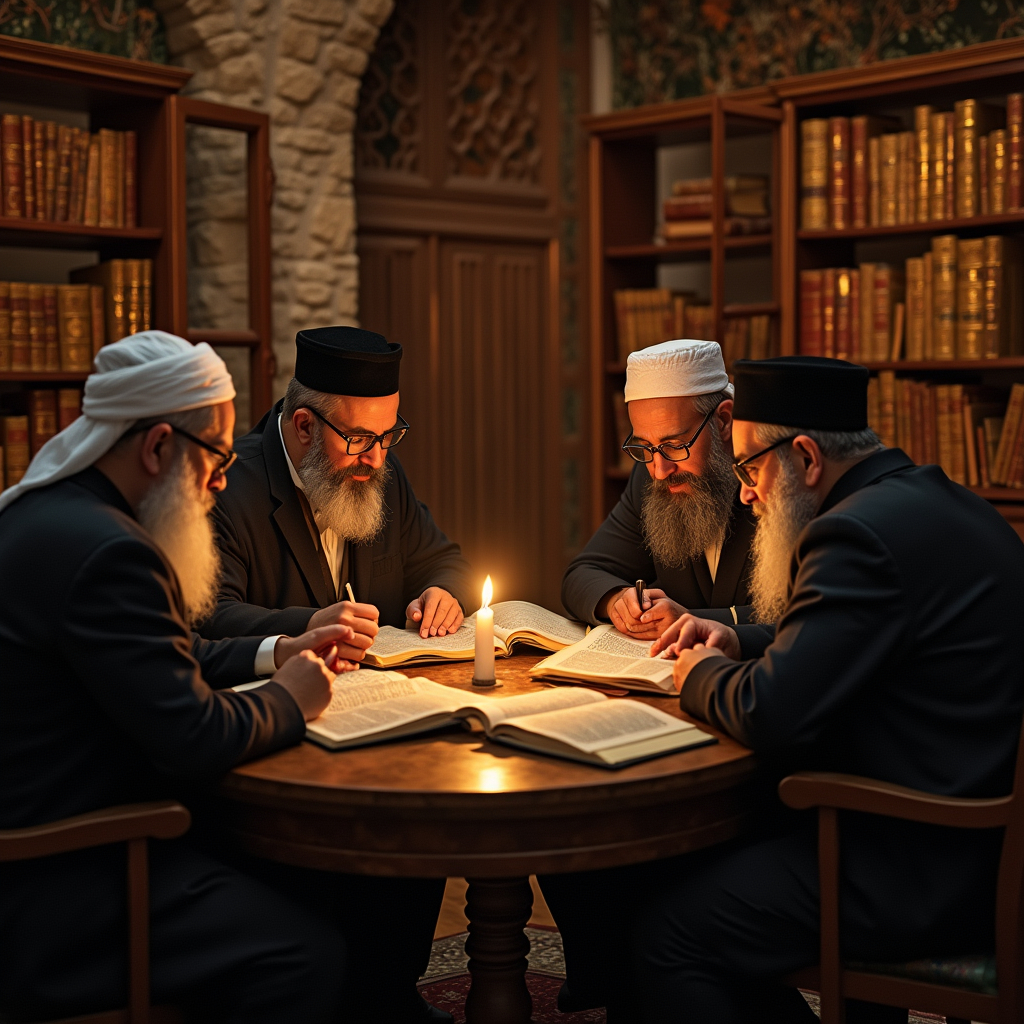
Customs are also known as “Urf ” in Muslim law. Customs are the day to day activities and matters on which the community of people agrees. Before the advent of Islamic law, customs were the only source with regard to the practice of Muslim law, traditions, religion and rituals. Although customs have not been officially recognised as a primary source, their contribution to Muslim law grants them a significant place within Islamic legal principles. Prophet Muhammad was of the view that as long as the customs do not stand against the Muslim law, they can be considered a source under the Muslim law. Customs as a source of law were prevalent before Islam occupied the Arab world. The prophet abolished customs to be deemed bad or evil, while he sanctioned others through his approval and sanctions. Jurists also formed their unanimous decision on the basis of customs. Today, customs are a force of law in Islam, excluding matters related to inheritance, special property of females, marriage, dower, divorce, maintenance, guardianship, gifts, waqf and trust, which are governed under the purview of the Shariat Act, 1937. Furthermore, customs do have a significant emphasis and influence on the growth and formation of Shariah. According to scholars and jurists, a custom must fulfil the following characteristics.
- It must be rational and common in nature.
- It must be followed as per the update and must not be very old.
- It must not contradict the texts of the Quran and the Sunnah.
- A custom must be timely updated and must be continuous and noticeable.
- The custom must be territorial
- It should not oppose public policies.
Judicial precedents
Judicial decisions refer to the principals, methods and processes by which judges use previously established case laws with similar facts to reach a conclusion or guide ongoing proceedings. The idea behind using this as a source is based upon the term “stare decisis,“ i.e., “conforming to what has already been declared.” The British regime made judicial precedents a part of Muslim law. They were originally never a part of Islam. Fatwas were part of Islamic law, and the Kazi’s were not bound to follow the same. After independence, the doctrine of judicial precedent was supported and implemented by the courts and the Constitution of India. The courts provided interpretation on the question of law where the provisions were unclear in providing solutions. The decisions given by the Supreme Court and High Courts acted as binding precedents for the time being in force. The Court gave interpretation in various cases to draconian provisions conflicting with fundamental rights, especially those of women in relation to divorce, maintenance, etc. The case laws of Mohd. Ahmed Khan vs. Shah Bano Begum and Ors (1985) , Begum Subanu Alias Saira Banu & Anr vs. A.M. Abdul Gafoor (1987), etc. are a few of the landmark cases that hold the grounds of ‘Reasonable Nexus’ and ‘Intelligible Differentia’ in the courts.
Legislation
Legislation means statutes enacted by the state of the parliament. legislation is another postulate that is a product of the British regime. In Islam, there is a rejection of every other source other than God vis-à-vis the Quran, but legislation is being enacted to deal with particular matters of debate. The Islamic community is reluctant to accept the changes made or new legislation given, which sometimes leads to conflicts between the community and the government. The Shariat Act, 1937, is one such piece of legislation that legislates on Muslims. The Mussalman Wakf Validating Act of 1913 is another example of such legislation. In Muslim law, the Prophets were considered the ultimate authority, and their teaching was considered paramount, surpassing any other.
Development and modern influence of Islamic legal principles
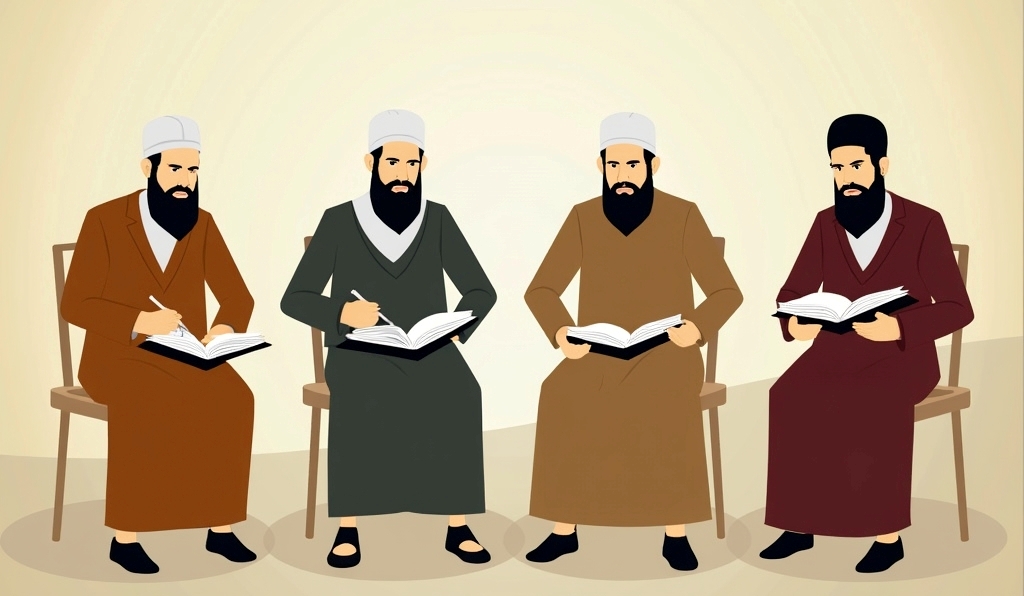
The doctrine of equity and absolute good is also recognised as a source of Muslim law. It is based on the principles of justice and equity, as used in English common law. We find it in Islam that the purpose of Islam is to guide humans in fundamental principles of religion, morality, and economics, which have derived their origin from natural sources. Abu Hanifa, who is considered the founder of the Sunni sect, initiated the principle of rule of law based on analogy, which could be set aside at the option of the judgement in the liberal preference of the jurists these principles of the Muslims are known as Istihan, which means liberal preference of the jurists. This term is used by the great jurist ‘Abu Hanifa’, to express liberty and deal with special circumstances. Moreover, several areas of Muslim law were also modified so as to meet the changing conditions in India, like personal law, Wakf law, property laws, criminal law and several others.
Modern Schools of Islamic law
After the death of Prophet Muhammad, there was a split in Islam as to who would be the next leader. Most people supported Abu Bakr, the father of Muhammad’s fourth wife, Ayesha Begum. This faction eventually became known as the Sunni sect, with Abu Bakr serving as the first Caliph. The dissenting sects chose the husband of the daughter (Fatima) of Muhammad, Ali, as their leader, this sect later came to be known as the Shia sect, and Ali was the first Imam. Both of the sects further divide on the basis of the interpretation of the Supreme Source. Therefore, the modern schools of Islamic law are divided into sects:
Sunni Schools
Hanafi school (699 AD-767 AD)
Hanafi School is the first and most popular school in Muslim law. Earlier, this school was known as ‘Kufa School’, which was based on the name of the popular city of Kufa in Iraq. Later, this school was based on its founder, ‘Abu Hanifa’. It is based on less reliance on unsighted customs and emphasises the analogical deductions verified through the text of the Quran. The use of local customs and usages as guiding principles in law. He established the Istihsan as a development of legal principles to meet the needs of changing times and also advocated for the Ijma. These schools became extremely popular among Muslims for their liberal thinking within the ambits of sources of Islam. Apart from the founder, ‘Imam Abu Hanafi’, he has two more disciples, Abu Yusuf and Imam Muhammad. The Hanafi school was favoured in most parts of India. This educational model was adopted in China, Pakistan, Turkey, and Afghanistan. It employed a straightforward methodology and was considered to be more rigorous than any other established system. The key provisions used under the Hanafi school were marriage, inheritance and divorce. The Hanafi faced criticism mainly for its perceived lack of gender equality and inconsistency in legal rulings. In one of the landmark cases of the Hanafi School, Muhammad Yunus vs. Muhammad Ishaq Khan (1921), the second appeal to the court argued the validity of a waqf under Hanafi law, contending that the lower courts had misconstrued Hanafi legal principles.
The appeal emphasised the authority of Qazi Yusuf’s opinion in cases of disagreement among Hanafi scholars. Additionally, it addresses the requirement under Sunni Muslim law for a waqf to be valid. The case underscores the interpretation and application of Hanafi and Sunni legal doctrines regarding waqf properties in legal proceedings. Similarly, in the case of Abul Kalam vs. Akhtari Bibi (1987), there was a conflict over the custody of a minor son governed by the Hanafi School of Mohammedan Law. The mother sought custody under Section 25 of the Guardians and Wards Act, 1890, which allows for child welfare to be prioritised in custody decisions. The appellants argued that under Muslim personal law, the father is the natural guardian; this section 25 doesn’t apply firmly. However, the Orissa High Court rejected this argument, emphasising the child’s best interest in custody matters.
Maliki school (711 AD-795AD)
The school was founded by Imam Malik. This school got its name from the term Malik-bin-anas, the Mufti of Madina. During this period, the ‘Kufa’ was highly considered the capital of the Muslim ‘Khalifa’, where ‘Imam Abu Hanifa’ and his disciples evolved along with the Hanafi school. The school believed highly in traditions and gave them due importance, even if they were of one character. The school was prominent in the foundation of Istihsan as a source of law, though it must be reported only when there was ambiguity in a decision based on other sources. The traditions of the companions of the prophet and of Medina are considered to be of high regard. The rights of women in property were not effectively represented in the schools, as her properties must always remain under her husband, for she cannot take care of her property alone. The followers of the school are mostly situated in North Africa and Spain. The key provisions of the Malik school were marriage, divorce and inheritance, which were based on the principles of customary “urf.” The Maliki school has been criticised for its rigidity in interpretation and it’s limited scope of application.
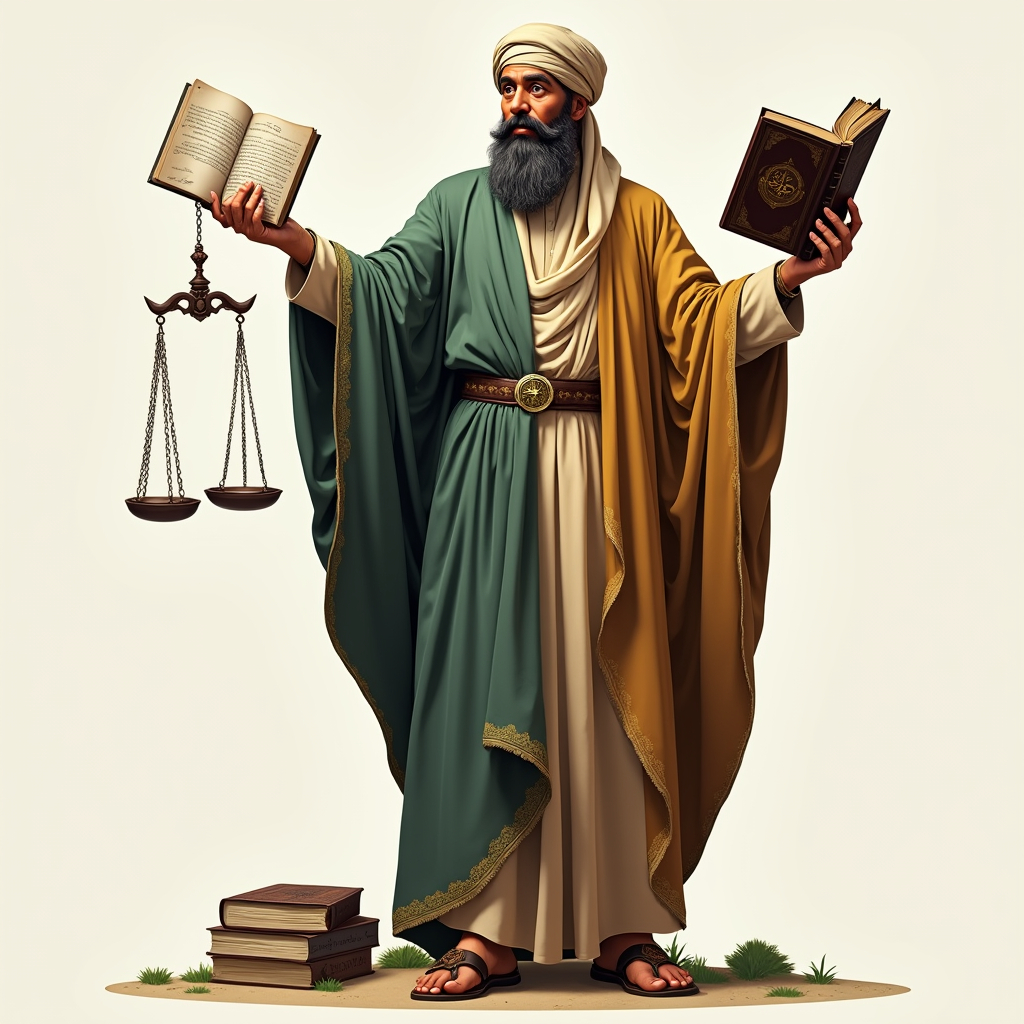
Shaefi’s school (767 AD-820 AD)
Abu Abd Allah Muhammad ibn Idris Al-Shafi’i founded the school. He was the student of Imam Malik of Madina. Al-Shafi’i teachings became especially influential in regions such as Syria, Egypt, Lebanon and some parts of Iraq, Iran and Pakistan. His most valuable contribution to Islamic jurisprudence was the foundation of Istidlal, a method of legal reasoning. He rejected the application of Istihsan (judicial preference) and Istislah (public interest) as sources of law. The emphasis was laid on Qiyas as the source only after the Quran, customs and Sunna. The major drawback to the school was the women’s right to marry, which was subjected to the consent of her guardian even after she’s major. The Shafi schools place the main emphasis on the principles and teachings of the Quran and the Sunnah, which were given by Prophet Muhammad. This school faced criticism for the issues of limited flexibility and regional variations. According to this school, the jurists considered Ijma to be an important source of Muslim law. The main contributions of the school to Muslim law were the Qiyas and the analogy.
Hanbali school (780 AD-855 AD)
Imam Abu Abdullah Ahmed ibn Muhamad Hanbal was the founder of the school, which was established around the early 9th century. Hanbal was regarded as a traditionalist and gave much emphasis to traditions, with an unbending approach to hadiths. In the school, very little emphasis is laid on human logical reasoning and the ijma and qiyas are also subdued. The ijma of the companions of the prophet was admitted only when it had no contradiction to the Quran and Sunnah. The followers of the school are present in Saudi Arabia and Qatar.
Shia schools
Imamiyah school
This school is also known as “Ithna Asharis.” The meaning of the term ‘Imamiyah’ in Arabic is Twelvers. It had 12 Imams to its credit. The school is the only one to allow ‘Muta’ marriage or ‘temporary marriage’. The school of thought is further divided into Akhbaris and Usulis. The Akhbaris are ardent followers of religion and the Usulis apply the principles of the Quran in the realistic chaos of life. The Shias are the majority of this school. The followers of the school are mainly found in Iran, Iraq, Pakistan and India. This school is considered the most dominant school in the Shia Muslim community. The people who followed the “Ithna asharis” school believed that the last of the Imams disappeared and was returning as mehdi (Messiah). This school was divided into two main sub-sects:
- Akhbari: These were considered very conservative and they used to follow all the customs in a rigid and substantive manner.
- Usuli: Usuli were considered the interpreters and expounders of the text of the Quran in relation to the real problems of day to day life. In other words, this school gives practical interpretation to the teachings and principles of the Quran.
Ismailiyah school
The demise of Imam Jafar led to the foundation of the school when the minority refused to acknowledge Musa-al-Kazim and started following Ismail. The name ‘Sabiyya’ or Sevener’s is for accepting only seven Imams. They are further subdivided into Khojas and Bohras. The Ismailiyah of Bombay (an Islamic institution in Mumbai, India) are either Khojas or Bohras. The khojas are the ones who believed Aga Khan to be the 49th Imam and the Bohras are mainly merchants. Egypt saw the prevalence of school in the Fatimid regime and is prevalent in south Arabia, Syria, Pakistan, central Asia and East Africa. Ismaili jurisprudence guides its legal and ethical practices by emphasising the principles derived from the Quran and Hadith. Under the leadership of the Imamat, particularly through the Aga Khan Development Network, Ismailis ethically promote education, social welfare, socialism and sustainable development throughout the Muslim community. One of the unique facets of this school was that its tenets integrated some of the Sunnah philosophies as well. One of the significant case laws of the Ismailiyah School is Commissioner of Income Tax-Iii (S) vs. Dawoodi Bohra Masjid & Kabrastan (2011). This case is about resolving conflicts under the Dawoodi property law on property ownership and inheritance, applying Islamic principles to resolve the dispute within the Bohra community, a section within the Ismaili School. The court followed the Ismaili principles. To resolve the conflict, Suhas focused on the community’s unique practices and traditions related to property ownership and inheritance.
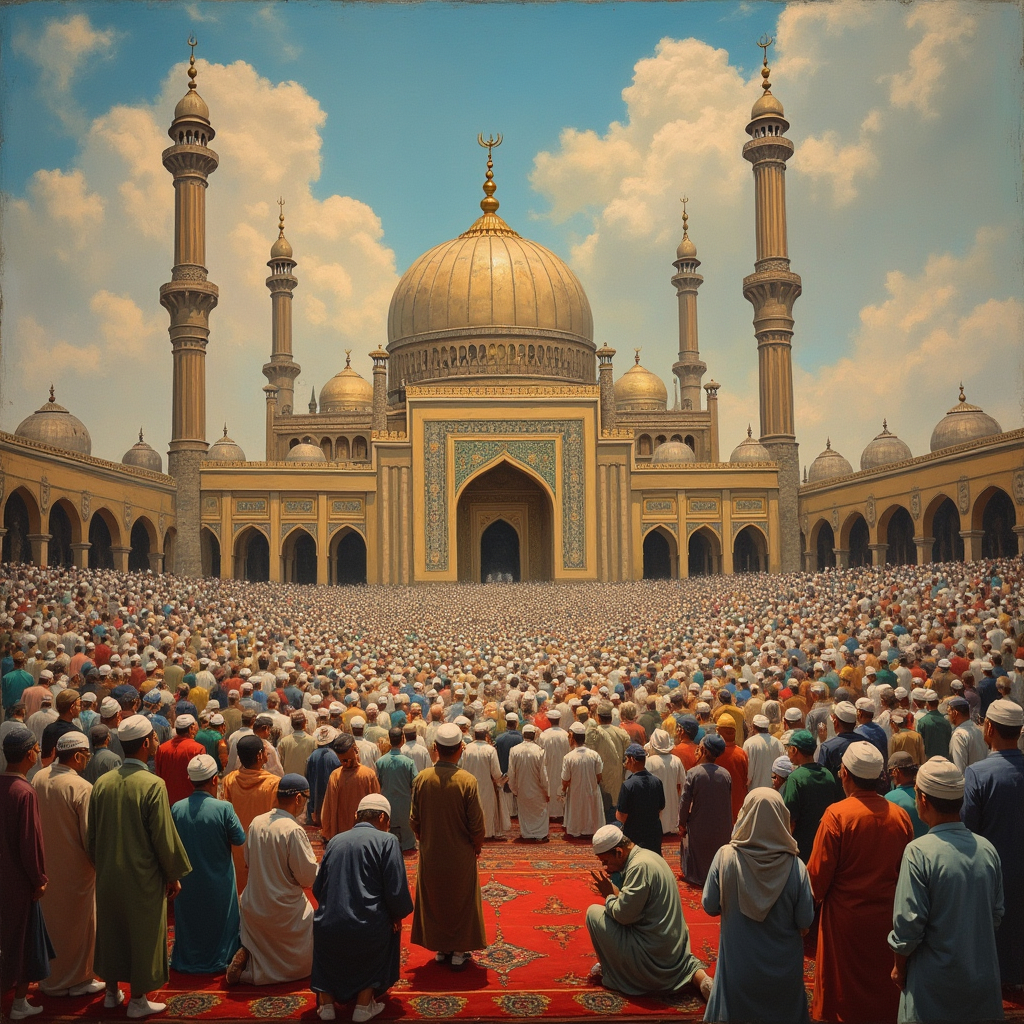
Zaidiyyah school
One of the fourth Imam’s sons, Zaydi, founded the school. The peculiar feature of the school is that it has some of the tenets of the Sunni sect. The sects believed in the basis of election on the concept of election and imam was regarded as a “right guide”. This sector of the Shia school was considered one of the dominant schools throughout yemen. The followers of this school are considered to be political activists. They often disregard the principles of the twelver shia philosophies. This school is notable for incorporating elements of Sunni Islam, particularly in its approach to leadership and governance, where the Imam is chosen according to the principles of election and seen as a “rightly-guided” leader. Historically, centred in Yemen, this school has played a significant role in the region’s political and religious dynamics. Today’s Zaydi communities continue to uphold their unique identity and beliefs, navigating contemporary challenges while preserving their historical and cultural heritage within the broader Islamic world.
Mu’tazila Sect
The followers of the sect disregarded both the popular sect and were originally the deserters of the Shia sect. Ata-al-Ghazzal was the founder of the school. Usually, the followers of this school are found in minority groups and can be found in Iran. The Quaranists, or “al-Qur’aniyya ”, believe that the Quran is the only source of religious guidance and law, rejecting the authority of the ‘Hadith’ and ‘Sunnah’. They argue that the Quran is complete and clear on its own. This movement has included various figures over its time and is present in several countries, including Iran, where they are typically a minority. They differ from mainstream Sunni and Shia Muslims by not accepting the Hadith as a source of religious authority. This school was started during the reign of Mamun. It is believed by the worshippers of this sect that they were dissenters from the Shia and Sunni communities. The Quran is the only backbone for their doctrine and principles. This school generally follows the practices, which may be quite different from each other but the intent behind each practice remains the same belief in one true what and his teachings.
In addition to the major Sunni and Shia sects, there are several other schools within Islamic law. The Ibadi school gives more preference to the Quran and they do not give the Sunnah much importance. This school has followers in Oman. One of the most important points about this school is that, besides the Quran, it has given principal consideration to Ijtihad (personal reasoning), which has been partially accepted by the Sunnis and has been completely rejected by the Shias. Sufism, a mystical dimension of Islam, seeks a personal experience of God through spiritual practices like meditation and chanting, which have a significant presence in Turkey, Iran, South Asia, North Africa, and Central Asia. So, while all Ibadis historically rejected Sufism, some Ibadi scholars did incorporate certain mystical elements, though this is controversial within Islam that emphasises direct spiritual experience, in contrast to Ibadi Islam’s more legalistic and theological orientation.
The Ahmadiyya Movement, founded in the 19th century by Mirza Ghulam Ahmad in India, emphasises a peaceful interpretation of Islam and views Ahmad as the promised Messiah and Mahdi. The movement promotes moral reformation and the global propagation of Islam, advocating for human rights and tolerance. It has a strong missionary tradition and has spread to over 210 countries, with an estimated 10-20 followers. The community is organised under a Caliphate system currently led by Mirza Masroor Ahmad. Ahmad’s teaching includes the belief in the continuity of prophethood, which is controversial among mainstream Muslims.
Development of Islam in pre and post-Constitutional era
The development of Islam in pre and post Constitutional eras in India has been shaped by various political, social, economic and legal factors. During Mughal rule, Islam thrived, with personal laws being propagated to a wider section of society. The British colonial era saw the introduction of a new legal system based on the principles of justice, equity and good moral sense. The development of Islam in India has been an ongoing and gradual process, influenced by several historical, social and legal factors. The pre and post constitutional periods of Islamic law are discussed below.
Pre-Constitutional era

During the time of the Mughals, Islam flourished, with their personal laws being propagated to a wider section of society. However, to our dismay, religious persecution of non-Muslims in the name of Islam was also a harsh reality faced by people during the Mughal reign. The Charter of 1661, during the reign of Charles II, authorised the company to administer the few places under its control in the administration of justice according to the laws of the British Kingdom. The hegemonic claims influenced various aspects of Indian life social, political and legal. A new class of educated people was created during the regime, which undermined Islamic principles of rationale and observation. This led to a decline in Islamic influence on the theocratic front. The Indian legal system underwent a change during the British regime, and with it, the personal laws also changed. These changes were largely instrumental in transforming India to develop a system based on the principles of justice, equity and good conscience. The British, for a variety of reasons, did not indulge in transforming Islamic laws directly.
The pre constitutional era can be divided into three stages:
- Early spread and establishment
- Regional variations
- Socio political structures
Early spread and establishment

During the early modern period, states like Ottoman Turkey, the Timurid Empire, Mughal India and Safavid Iran emerged as global powers. However, by the 19th and early 20th centuries, much of the Muslim world came under European colonial influence or control. Efforts to gain independence and the establishment of modern nation-states since then have led to ongoing conflicts in regions like Kashmir, Palestine, Xinjiang, Central Africa, Bosnia, Chechnya and Myanmar. Furthermore, the oil boom propelled Gulf Cooperation Council states into major global oil producers and exporters, focusing on capitalism, tourism and free trade.
The development of Muslim laws is extensively linked to political changes, globalisation trends and economic changes in Muslim-majority regions. Moreover, participation and free trade agreements by GCC states have driven legal harmonisation and standardisation of business practices under Sharia principles. This integration highlights the adaptation of the Islamic legal framework to accommodate and consolidate international trade regulations and economic integration. Overall, these dynamics illustrate how contemporary geopolitical and economic trends shape the ongoing development of Muslim laws, thereby responding to global challenges while maintaining adherence to Islamic principles.
The role of caliphates
The Caliphates, i.e., the Rashidun, Umayyad and Abbasid Caliphates, significantly contributed to the spread of Islam across the Middle East, North Africa and parts of Europe and Asia. Under their leadership, Islam spread through cultural influence, conquest and trade routes. The Rashidun Caliphate, established after the death of Prophet Muhammad, saw rapid expansion under Caliphs like Abu Bakr, Umar Uthman and Ali.
The Umayyad Caliphate, founded by Muawiya, further extended Muslim rule into Spain, central Asia and the Indian subcontinent. Furthermore, the Abbasid Caliphate, who is generally known for the cultural and scientific arrangements during the Islamic golden age, consolidated Islam into fields such as mathematics, medicine and astronomy. Collectively, these caliphates shaped the early spread and establishment of Islam, thereby leaving a lasting impact on global history and civilisation. The cultural and scientific contribution during this era was of the utmost significance. The period from the 8th to the 14th centuries was considered a golden age for science, medicine and literature, with significant contributions from scholars in Islamic law.
Regional variations
In the 8th century, Muslim armies conquered Egypt and expanded across North Africa. The Umayyad and Abbasid Caliphates consolidated control in the region and facilitated the spread of Islam through trade and cultural expansion. In 711 CE, Muslim forces crossed into Spain, initiating the period of Al-Andalus.Cities like Cordoba became centres of learning until the Reconquista in the late 15th century. Further, Islam also spread into the Persian Empire and Central Asia through the support of military conquest and trade during the 7th and 8th centuries, thereby leading to a significant merger of Persian culture and Islamic practices.

In the Indian subcontinent, the initial assault in the early 8th century was by the Umayyud Caliphate, particularly under Mohammad bin Qasim. The Delhi Sultanate, established in 1206 CE, and the Mughal Empire, founded in 1526 CE, came later and were instrumental in promoting significant cultural and architectural developments. Moreover, in southeast Asia, Islam spread in the 13th and 15th centuries through trade and expansion, which led to a significant Muslim population in Indonesia, the southern Philippines and Malaysia. Sub-Saharan Africa saw the spread and expansion of Islam from the 8th to the 12th centuries. The West-African Empires of Mali and Shonghai adopted Islam and established centres of learning like Timbuktu. The Ottoman Empire (14th-20th century) spread Islamic governance and culture in Eastern Europe, including the Balkans and Greece. The key factors that facilitated this expansion included trade routes, military conquests and cultural integration.
Post Constitutional era
The post-constitution era of Islamic law saw several changes and developments, marked by both continuity and change from the colonial era. There were several attempts to reconcile Islamic law with Western legal concepts, but the relationship remained complex. Postcolonial state sovereignty was premised on a recalibration of the pre-colonial balance between the political authorities and jurists, allowing the state siyasa to operate free from Sharia limits. The concept of siyasa became crucial, allowing governments to extend judicial and legal control beyond traditional Sharia limits. Furthermore, legal pluralism emerged, with Islamic law existing alongside civilian and customary laws, particularly in family and personal status matters. Judicial reforms, however, varied, with some countries emphasising Islamic principles and others maintaining a more secular status. This era continues to be shaped by the debate over gender equality, human rights, and Islamic law in modern governance, highlighting the complex and evolving relationship between religious and secular legal principles. After independence, attempts were made to make all personal laws of different religions unified under the banner of the Uniform Civil Code. In an attempt to align personal laws in consonance with the secular nature of the Constitution and to end centuries old laws outdated by the common needs of society, Article 25 was inserted in the Constitution of India, which provides freedom to practise any religion. The central and state governments attempted to reform personal laws but encountered significant agitation from various parts of the country. Muslim Personal Law (Shariat) (Kerala Amendment) Act, 1963, Meghalaya Muslim Marriages and Divorces Registration Act, 1974, Jammu and Kashmir Muslim Personal Law (Shariat) Application Act, 2007” is a few of such legislations that were a move in such directions. The legislation was implemented in letter but failed in spirit to provide any substantial change. The Muslim Women (Protection of Rights on Divorce) Act of 1986 failed to provide any relief for the destitution of women for maintenance after divorce.
Key practices in Muslim law
This heading deals with the key practices of Muslim law Triple Talaq, Halala and maintenance. These practices of Muslim law have profound implications for the personal and legal lives of Muslims in India. The following practices were developed in the pre-constitution era of Muslim law, such as triple talaq, which was developed during the pre-constitutional era through the Shariat Application Act, 1937. This Act came to apply to Muslim personal laws in India, recognising practices like Triple Talaq as part of Muslim law.
Triple Talaq
Among almost all the nations of antiquity, divorce was regarded as a natural corollary of marital rights. Romans, Hebrews, Israelites, etc. all had divorce in one form or another. Even though the provision of divorce is recognised in all religions, Islam is perhaps the first religion in the world to expressly recognise the termination of marriage by way of divorce. In England, divorce was introduced only 100 years ago. In India, among Hindu’s, it was allowed only by the Hindu Marriage Act, 1955. Before the passing of the sack, divorce was not recognised by Hindu law.
According to Ameer Ali, the reforms of Prophet Mohammad marked a new departure in the history of Eastern legislation. Prophet Muhammad restrained the power of divorce and gave women the right to obtain separation on reasonable grounds. The Prophet is reported to have said, “If a woman is prejudiced by a marriage, let it be broken off.”.
However, there is a difference between divorce and Talaq. The word Talaq is used in two senses
- Restricted sense: it is confined to separation affected by use of certain appropriate words by the husband.
- Wide sense: this category covers all separations for causes originating from the husband.

Triple Talaq, also known as “Talaq-e-Bid’ah,” refers to the practice where a husband can divorce his wife by pronouncing “Talaq” three times in quick succession. This practice has its roots in Islamic jurisprudence and has been a subject of debate among scholars. This practice is derived from the Quran and the Hadith, where divorce is permitted but regulated. Historically, various Islamic schools of thought (Hanfi, Maliki, Shafi’i, and Hanbali) have interpreted the rules surrounding divorce separately and differently, leading to variations and practices over time. As far as the judiciary in India is concerned, it has so far, barring a few exceptions, tolerated Triple Talaq. The common phrase used by courses is that the talaq-e-bidat or triple pronouncement of divorce, is good in law and bad in theology.
The Triple Talaq is recognised and endorsed by the Indian judiciary. The Bombay High Court in Sarabai vs. Rabiabai (1905) recognised Triple Talaq and irrevocable footing. The Indian stand case on Haji Adam Siddique, with two witnesses, approached Qazi and before him, he pronounced Talaq in the absence of his wife. Talaqnama was prepared by Qazi and the same Pauly signed by all concerned steps were taken to hand over her iddat allowance with the communication of talaq. But she managed to do the same. Haji Adam died very soon. His divorced wife filed a suit assuming herself to be the wife of Haji Adam for maintenance and residence, but the Bombay High Court refused to accept her contention and held the above referred Talaq on irrevocable footing. Similarly, in Saiyida Rashid Ahmad vs. Mst. Aneesa Khatoon (1931), the privy council recognised triple talaq pronounced at one time as validity effective.
Recently, the Allahabad High Court in Smt. Nazia Begum vs. Shoaib Ahmad (2019) held that a divorce by Muslim husband by citing talaq thrice at the time when his wife was not present there. The husband had arranged for witnesses and communicated to his wife through a letter that she had been divorced after he cited talaq, talaq, talaq for her.
In the case law Shayara Bano vs. Union of India (2017), which was upheld by the Supreme Court ruling (2017), the Indian Supreme Court declared the practice unconstitutional, stating it violated the fundamental rights of women. The court emphasised the need for reform in Muslim personal laws to ensure gender equality.
Halala
Nikah halala, rooted in Islamic law, is a controversial practice in Islam that requires a woman, after being divorced by Triple Talaq, to marry another man, consummate the marriage, and then get divorced again in order to be able to remarry her former husband. This practice is derived from Quranic verses that outline divorce procedures, emphasising that after three divorces, a woman cannot return to her husband unless she first marries another man. Historically, this was intended to prevent impulsive divorces and ensure that marriages were taken seriously, but it has evolved into a controversial practice that raises significant ethical concerns regarding women’s rights and autonomy in contemporary society.
According to Islamic law, a husband may divorce his wife by simply announcing talaq. The initial declaration of Talaq is revocable during the waiting period (iddah), which lasts three menstrual cycles. If the husband repudiates his wife for the third time, it triggers an irrevocable “major” divorce, after which the couple cannot remarry without an intervening consummated marriage by the wife to another man.
This kind of intervening marriage is called Nikah Halala or tahlil marriage. However, there are Hadith indicating that entering a tahleel marriage with the intention of divorcing so that the original spouses can remarry is forbidden (Haraam).
Nikah halala is usually practised by the small minority groups of the Muslim community, mainly in countries like Pakistan, India and Iran. Petitions have been filed in the Supreme Court of India seeking the annulment of Nikah Halala as it is seen to violate Muslim women’s rights to equality, non-discrimination and dignity. The All India Muslim Personal Law Board opposes nikah halala and feels its use should be restricted to the “rarest of rare situations.”
In Sameena Begum vs. Union of India (2018), a public interest litigation was filed challenging the practice of nikah halala and polygamy, arguing they violate women’s rights under Articles 14, 15 and 21 of the Constitution. The Supreme Court issued notices to the National Human Rights Commission and other bodies regarding these practices.
Maintenance

Maintenance means provisions for food, lodging and other essential requirements for a livelihood. ‘Duty to maintain’ is an obligation under which a person is liable to provide food, lodging, clothing, etc. to another person. In pre-Islamic Arabia, there was no obligation on the part of the parents to maintain their children. Similarly, the children were also not bound to maintain their elderly and infirm parents. Maintenance in Muslim law, referred to as “Nafkah”, encompasses the financial support a husband is obligated to provide to his wife, children, and other dependents. Under Muslim law, a person may have the right to be maintained by another on the basis of:
1. Marriage
2. Blood relationship
A wife is entitled to be maintained by her husband because of marriage and a right is absolute; the husband is bound to maintain the wife whether she is necessary or not. The second category of persons entitled to maintenance are the blood-relations which include young children, necessitous parents and other relations with the prohibited degree. In this manner, under Muslim law, the following persons are entitled to maintenance:
- Wife,
- young children,
- The necessary parents and
- Other necessary relations within the prohibited degrees.
Historically, this obligation has been rooted in Quranic principles, emphasising the husband’s duty to ensure the sustenance of his family, including food, clothing and shelter.
Key developments in the legal framework include the Mohd. Ahmed Khan vs. Shah Bano case (1985), where the Supreme Court ruled that a divorced Muslim woman is entitled to maintenance beyond the ‘iddah’ period if she is unable to protect herself. This led to the enactment of the Muslim Women (Protection of Rights in Divorce) Act, 1986, which limited maintenance obligations to the ‘iddah’ period but allowed claims from relatives of the Waqf Board if further support was needed. Daniel Latifi and Anr. vs. Union of India (2001) reaffirmed that husbands must provide reasonable maintenance beyond ‘iddah’, highlighting ongoing legal debate and surrounding women’s rights in Muslim personal law.
It is significant to know that a Muslim wife’s right to maintenance is determined not only under personal law but also under the Criminal Procedure Code. The claim of a wife for maintenance under this act is an independent statutory right and is not affected by her personal law.
In a landmark case law, Begum Subanu alias Saira Banu vs. A.M. Abdul Gafoor (1987), the Supreme Court held that irrespective of a Muslim husband’s right to a contract second marriage, his first wife would be entitled to claim maintenance. In this case, the husband married a second wife and the first wife left the house and lived separately. Living separately, she claimed maintenance under Section 125 of the Criminal Procedure Code, 1973. Elaborating on the provisions of the explanation to Section 125(3) of the Criminal Procedure Code, the Supreme Court held that from the point of view of a neglected wife, for those benefits the explanation has been provided, it will make no difference whether the woman intruding into her husband’s matrimonial life is another wife permitted under law to be married and not a mistress. The court held and observed that the explanation had to be construed from the point of view of the injury to the matrimonial rights of the wife and not with respect to the husband’s right to marry again.
Recently, in the case law Mohd Abdul Samad vs. The State of Telangana (2024), it was established that the case of maintenance for Muslim women has been shaped by a significant Supreme Court ruling on July 10, 2024. The court affirmed that divorced Muslim women can seek maintenance under Section 125 of the Code of Criminal Procedure 1973, extending their rights beyond the iddah period. This ruling of the Supreme Court emphasises that the provisions of Section 125 of the CrPC apply universally, regardless of personal laws, and ensure gender equality in maintenance rights for all married women, including Muslims.
The All India Muslim Personal Law Board (AIMPLB) has framed and allowed plans to challenge this ruling, arguing that it contradicts Islamic law, which traditionally limits maintenance obligations to the ‘iddah period’.
Conclusion

The radiant spectrum of Islam displays a wealth of spirituality, religion and monotheistic nature. When we traced the origin in the form of the Quran, we enriched ourselves with a plethora of revelations where God gave human beings a path to follow for self-discipline, holiness and oneness with God. The development traced down to different schools after the death of the Prophet Muhammad showed us the independent nature of thought developed on the principles of the Quran. The role played by the Hadiths, Sharia law and Fiqh also had positive impacts on the development of Islam by saving it from the archaic rudimentary thought process. Much has been done to keep pace with the sands of time, and the judiciary is also trying to bring Islamic laws in consonance with the Constitution of India, which can be seen through the cases of Shah Bano and Shayara Bano. Sharia dates back to the 7th century with the Quran and the Prophet Mohammad’s teachings, evolving through scholarly interpretations. Further, major schools like Hanafi, Maliki and Shafi provided diverse perspectives on Islamic law. Despite the challenges faced over time, Sharia remains a vital component of legal and moral guidance in Muslim law, therefore reflecting its enduring influence and adaptability over time. It embodies ethical conduct, shaping decisions on justice, rights, and societal duties. “Sharia adapts to changing contexts while upholding Islamic principles of fairness and moral integrity, ensuring its enduring influence on Muslim communities worldwide.
Frequently Asked Questions (FAQs)
What are the misconceptions about Sharia law?
Common misconceptions about Sharia law include the belief that it is a single, rigid legal code, while in reality it is a complex structure with a diverse system and various interpretations. Another conception of Sharia law involves harsh punishments, but it also encompasses a wide range of ethical and legal principles.
How do Islamic scholars address modern issues with sharia?
Islamic scholars used principles such as Ijtihad and Maqasid-al-Sharia to address contemporary issues related to the modern world, therefore aiming to align model practices with Islamic values.
How does the application of the Sharia differ among Muslim-majority countries?
The application of Sharia is widespread among different countries as it is influenced by historical, cultural and political factors. Some of the countries apply Sharia comprehensively, while others incorporate the elements of Sharia selectively and distinctively within a secular legal framework. Sharia is the moral and legal code of Islam, derived from the Quran, Hadith and other Islamic texts. It covers a wide range of aspects, including rituals, family life, business, crime and ethics. The application of sharia is dynamic and diverse, influenced by a multitude of factors. While some countries implement it comprehensively, others integrate it selectively within a secular legal framework. This diversity reflects the adaptability of Shaurya’s different social, cultural, and political contexts, allowing it to function in a variety of environments while maintaining its core principles.
How does analogical reasoning (Qiyas) function in Muslim law?
Analogical reasoning involves deriving legal rulings for new situations by drawing parallels and similar laws with existing ones, i.e., the Quran and the Hadith. This method helps address issues not explicitly covered in primary sources. Analogical reasoning is one of the four main sources of Islamic jurisprudence, alongside the Quran, the Hadith and consensus. Qiyas is employed to extend the principles found in the Quran and the Hadith to new situations and contexts, ensuring that Islamic law remains relevant and applicable over time. The process of Qiyas includes several steps:
- Identification of the original case (Asl)
- Identification of the new case (Far’)
- Commonality of the Illah (Effective cause)
- Derivation of the ruling
References
- Powers, David. Wael B. Hallaq on the Origins of Islamic Law: A Review Essay. Islamic Law and Society. (2010).
- Lapin, T. W. “On the Origins of Islamic Law,” University of Baltimore Law Forum: Vol. 6 : No. 2 , Article 12. (1975)
- Weeramantry, C. The Origins of Islamic Law. (1988).
- Hassan, Farooq. The Sources of Islamic Law. Proceedings of the ASIL Annual Meeting. (1984).
- Ramadan, Tariq. Determining the Sources of Islamic Law and Jurisprudence. (2008)
- Dr. Muhammad Imran Ashraf Usmani, Riba in the Qur’an, ISLAMIC MARKETS
- Hasan, A. (1977). THE PRINCIPLE OF ISTIḤSĀN IN ISLAMIC JURISPRUDENCE. Islamic Studies, 16(4), 347-362.
- ABDULMALIK ABUBAKER, The Historical Development of Islamic Law, Abyssinia Law
- GIUNCHI, ELISA. “The Reinvention of “Sharīʿa” under the British Raj: In Search of Authenticity and Certainty.” The Journal of Asian Studies 69, no. 4 (2010): 1119-142.
- Ahmad, Furqan. “UNDERSTANDING ISLAMIC LAW IN INDIA: AN ASSESSMENT OF THE CONTRIBUTION OF JUSTICE V.R. KRISHNA IYER: A TRIBUTE.” Journal of the Indian Law Institute 57, no. 3 (2015): 307-32.
Students of Lawsikho courses regularly produce writing assignments and work on practical exercises as a part of their coursework and develop themselves in real-life practical skills.
LawSikho has created a telegram group for exchanging legal knowledge, referrals, and various opportunities. You can click on this link and join:
Follow us on Instagram and subscribe to our YouTube channel for more amazing legal content.
 Serato DJ Crack 2025Serato DJ PRO Crack
Serato DJ Crack 2025Serato DJ PRO Crack


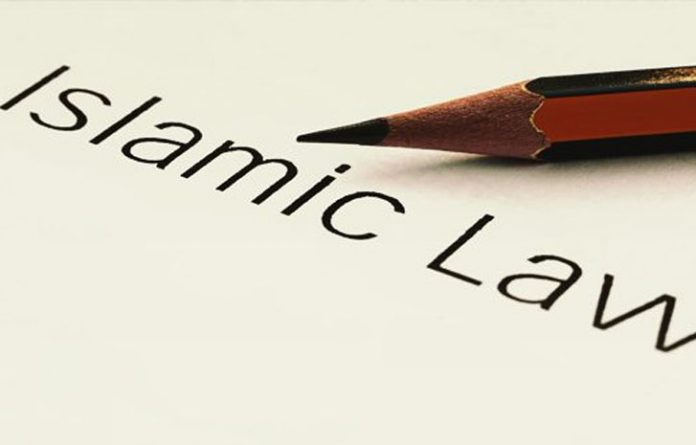







 Allow notifications
Allow notifications



